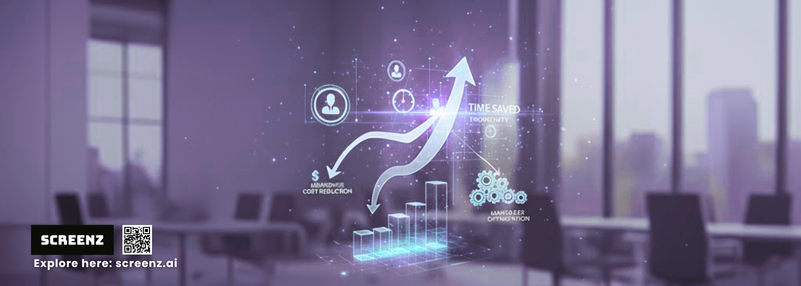How Modern Hiring Saves Time, Manpower, and Millions in Lost Productivity
Every company knows that hiring takes time. What many don’t realize is just how much of that time translates directly into lost productivity, delayed growth, and missed opportunities.
Hiring inefficiency has become one of the biggest hidden costs in modern organizations. The time lost to manual coordination, subjective interviews, and long decision cycles often outweighs the cost of job ads or recruiter salaries. According to the Society for Human Resource Management (SHRM), the average time-to-fill across industries is 44 days (SHRM, 2017 Talent Acquisition Report). That means nearly a month and a half before a new hire even steps into the role.
For growing startups and scaling teams, those 44 days can mean lost revenue, overworked employees, and delayed execution on key initiatives.
The True Cost of Hiring Inefficiency
Research from Zippia (2023) found that the average cost per hire is $4,700, with internal recruiting expenses accounting for more than half of that total (Zippia Research). But this number doesn’t tell the full story.
Behind every new hire, there are hours of manual coordination, screening calls, interview feedback loops, and decision meetings. A study by Toggl Hire (2024) revealed that recruiters and hiring managers spend between 90 and 150 minutes per candidate on interviews alone (Toggl Hire Blog). Multiply that by hundreds of applicants, and it becomes clear how quickly time drains away.
Even worse, every day a position remains open compounds opportunity costs. Teams slow down, projects stall, and morale drops as workloads pile up.
Why Traditional Interviews Waste Time
Traditional interviews are built on inefficiencies that add up across every hire:
- Scheduling Chaos – Aligning calendars and rescheduling consumes 30 to 45 minutes per candidate.
- Unstructured Interviews – Conversations often drift off-topic, making it hard to compare candidates objectively.
- Delayed Feedback – Hiring decisions stall while teams collect opinions instead of data.
- Candidate Drop-Off – Studies from Robert Half (2024) found that 57% of job seekers lose interest if the process takes too long (TalentLyft Blog).
By the time a decision is made, top candidates have often already accepted another offer.
The Modern Hiring Advantage
Modern hiring powered by AI automation changes the equation entirely. Platforms like Screenz.ai streamline the process by replacing manual steps with data-driven, asynchronous interviews that can be reviewed on-demand.
Companies using automated interviews report:
- 6.5x faster hiring cycles
- Up to 90% less recruiter coordination time
- More objective scoring based on real performance
These efficiencies translate directly into measurable savings. A mid-sized firm that previously spent 8 hours per candidate can reduce that to under one hour, saving hundreds of recruiter hours per quarter.
The Compounding Productivity Impact
Time saved in hiring doesn’t just help recruiters—it accelerates entire organizations.
Consider that new hires typically reach only 25% productivity in their first month, according to Zippia Research (2023). When the hiring process itself is shortened, new employees onboard faster, projects move forward sooner, and growth compounds earlier.
The ripple effect extends to existing staff as well. Fewer open roles mean less overtime, lower burnout, and higher team morale. The cost of unfilled positions often exceeds the cost of recruiting itself—a fact supported by studies shared across HR communities on Reddit’s r/recruitinghell, where hiring professionals frequently highlight the strain of delayed decisions and overextended teams. (Reddit: r/recruitinghell)
Beyond Speed: Consistency and Fairness
Modern hiring isn’t just about speed. It’s about improving fairness and consistency through structure. Research from Oxford Academic (2025) shows that structured interviews are far more predictive of job performance than unstructured ones (Oxford Academic Journal).
AI-driven interviewing ensures every candidate gets the same experience, the same questions, and the same scoring metrics. This eliminates bias, reduces variability, and builds a stronger foundation for diversity and inclusion.
The Bottom Line: Efficiency Creates Opportunity
When hiring becomes faster and more objective, companies gain a compounding advantage. Every hour saved in the hiring process returns to strategic work, product development, and customer growth.
Organizations using platforms like Screenz.ai are proving that efficiency is not just an HR metric—it’s a growth multiplier.
Want to see how much time and money your company could save with automated hiring?
👉 Try the free hiring efficiency calculator at screenz.ai.
References
.avif)









